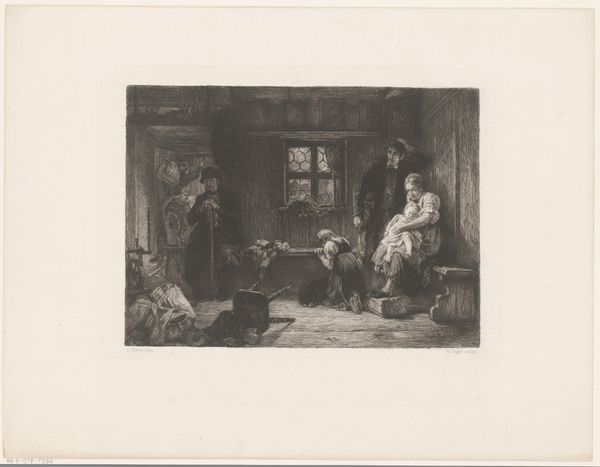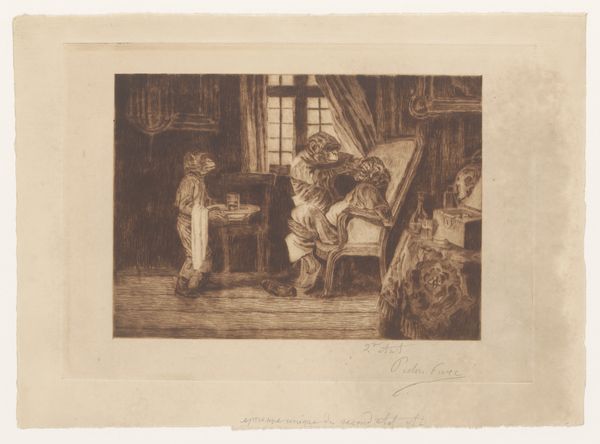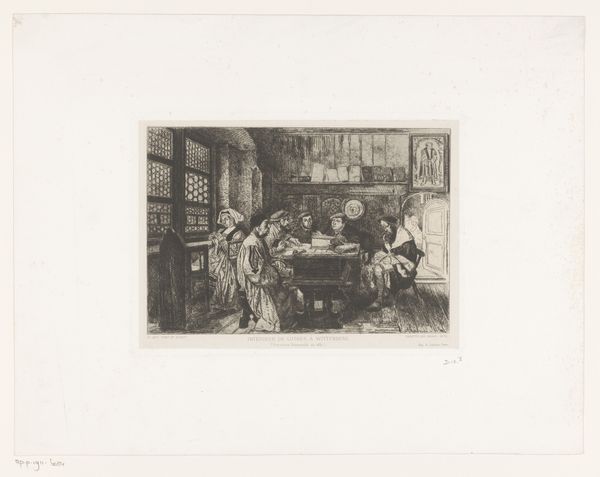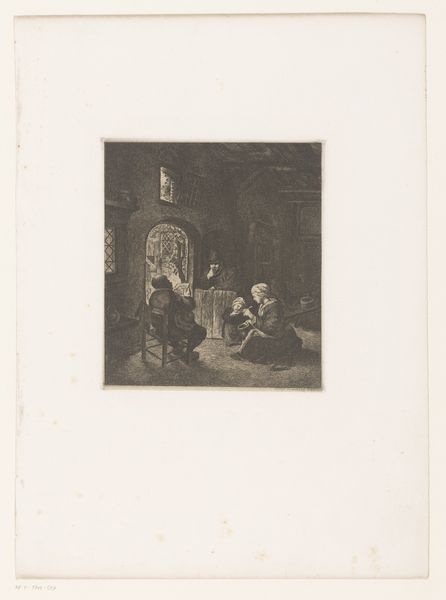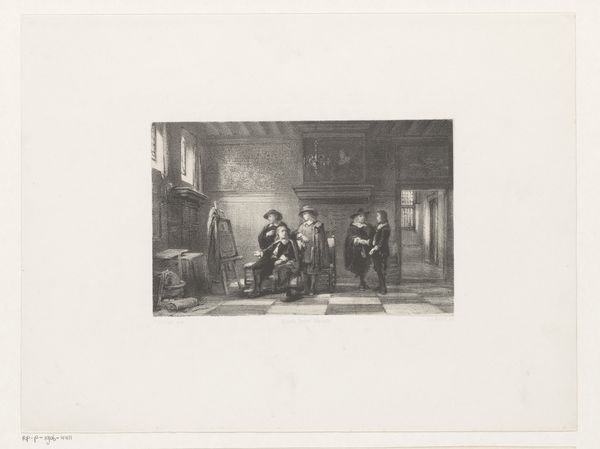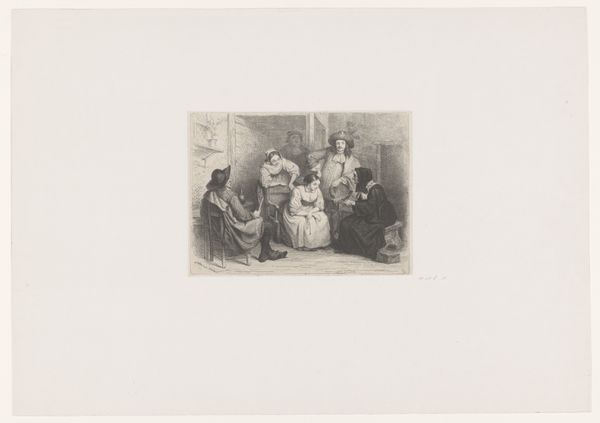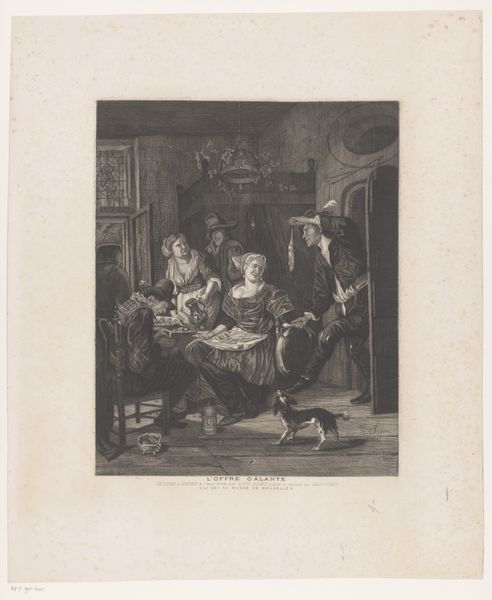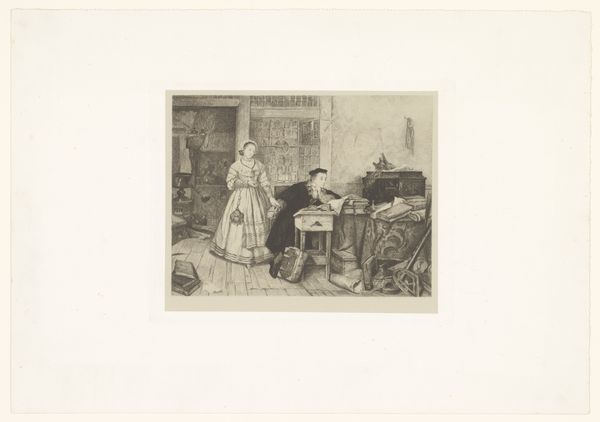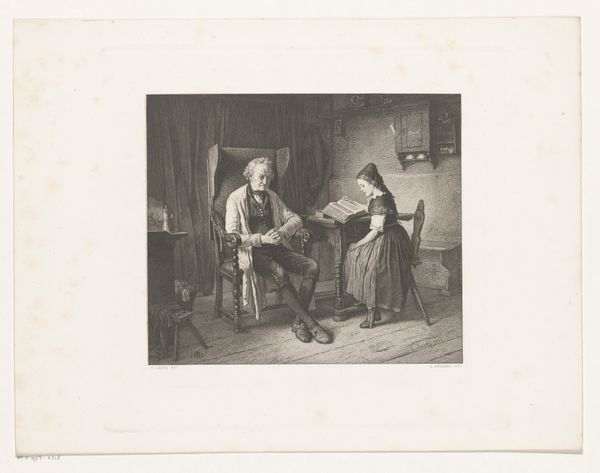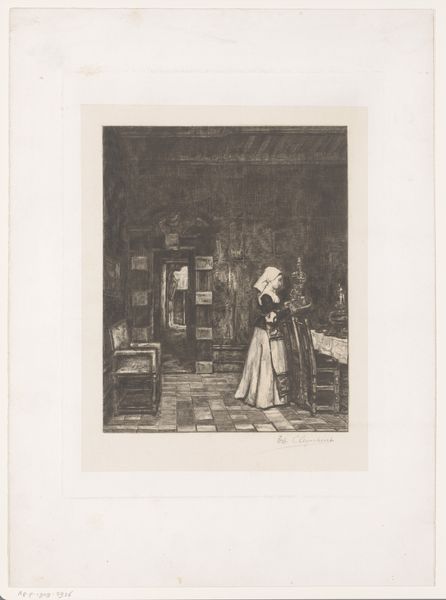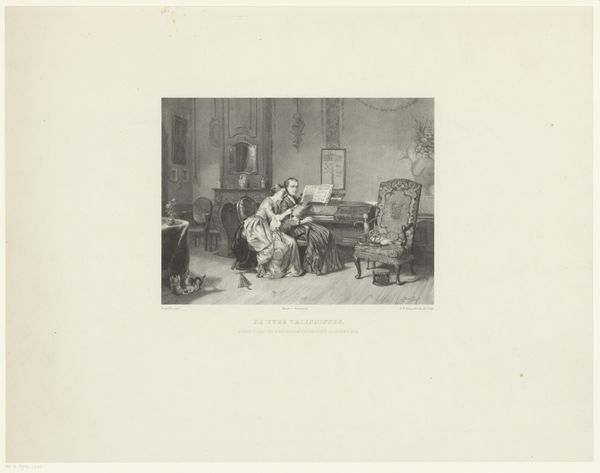
#
photo of handprinted image
#
light pencil work
#
pale palette
#
photo restoration
#
natural tone
#
ink paper printed
#
wedding photography
#
light coloured
#
old engraving style
#
warm natural lighting
Dimensions: height 171 mm, width 255 mm
Copyright: Rijks Museum: Open Domain
Editor: So, this is "Young Scholar and a Woman at the Harpsichord" dated between 1847 and 1889, found here at the Rijksmuseum. It's by William Unger, created using ink on paper. The engraving is so detailed! I immediately noticed the light pencil work, it feels very intimate, almost like a stolen moment. How would you interpret its aesthetic qualities? Curator: Formally, one notes the interesting interplay of light and shadow, particularly how it delineates the subjects' forms and directs the viewer's gaze through the interior space. Observe how Unger has masterfully manipulated tonal values to create depth. The details such as patterned walls and light flooding through the window generate a sophisticated articulation of space, don't you think? Editor: I do. What is it about those fine details and textures that resonates so deeply, rather than larger narrative elements? Curator: In part, the effectiveness is about pure form; these textures create a rich visual field. By emphasizing composition and form over explicit narrative, we are invited into a meditation on the visual experience itself. Unger isn't simply depicting a scene; the artist's strategic arrangements create meaning. Notice also how the horizon line from the windows and artwork provide this piece an important aspect of space. Editor: That makes perfect sense, now I am wondering about how artists select specific papers with subtle texture, and if this was deliberate? Curator: Absolutely. It adds to the complexity of the interplay of lines and dots making up the photo engraving! And, perhaps unexpectedly, these aesthetic decisions do evoke the feeling of "a stolen moment." What do you think, knowing how thoughtfully constructed that impression really is? Editor: It deepens my appreciation! By considering Unger's intentional manipulation of light and textures, I better comprehend not only *what* is depicted but also *how* those formal qualities shape my interaction with the image. Thank you. Curator: A pleasure. Remember, the structure shapes the subject.
Comments
No comments
Be the first to comment and join the conversation on the ultimate creative platform.
